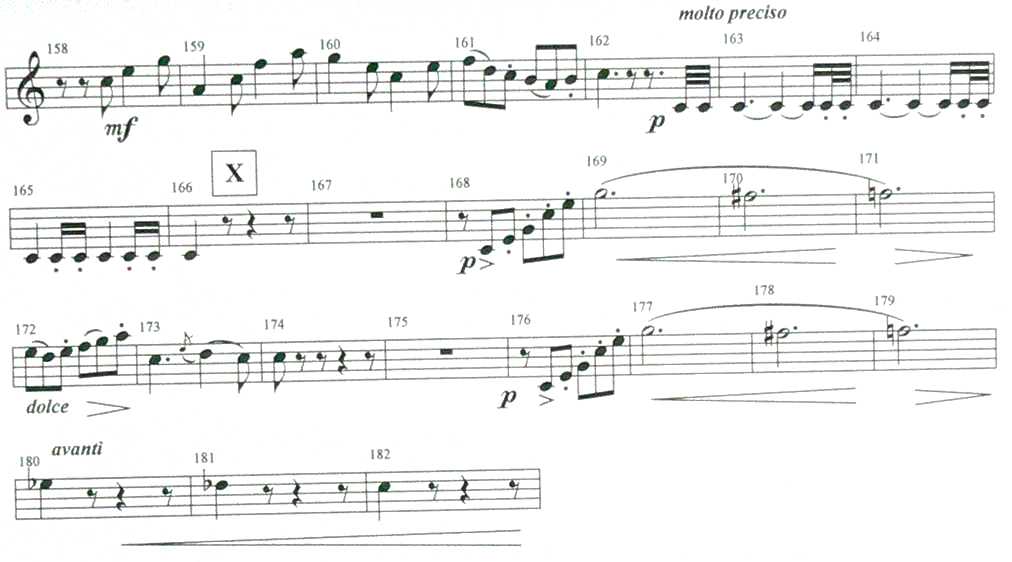|
3eme Concerto pour le Cor op.106 (K.495) |
Ein Waldhorn Konzert für den Leitgeb |
|
How to play this concert |
Interpretationsanleitung |
|
Mozart´s third Concerto for horn, which we named the No.4. Why ? The No.1 D-major is a fragment only, never finished by Mozart himself. |
Mozarts drittes Hornkonzert, das wir als no.4 bezeichnen. Warum ? No.1 in D-Dur ist ja nur ein Fragment, das Mozart nie fertiggestellt hat. |
|
3rd movement: |
RONDO Allegro vivace p.17 |
|
| |
|
M.157 is a spot where most interprets get trouble with the orchestra, as the coordination can become problematically, if the soloist does not keep the rhythm. If you change well back & forth with thumb valve here, you might realize, that only the first valve, the strongest & quickest of all valves besides the thumb valve, will be involved. The low bb 1/32th-notes in the upbeats should be executed as they are, but for better audibility on the T1. Realize that the last sequence, M. 164 is different. Here the short notes are sixteenths. Sounds like a diesel. Ha, ha ! Now as we have reached the end of the concerto nearly, there is not much to say further. Nice tonguing the third & the sixth note in M.171 would contribute to clarity, as slurred d2 (F0)-c2 (F0) and eb2 (T1) - f2 (T0 !!!!) but g2 (T0) would do also. Push the tempo something forward within MM.179-181, as going for a cadenza & ad a short few second arpeggio culminating in a high f3 or in a (half) thundering forte a1 (be careful, please, as it is still Mozart !) before continuing with the entrance phrase. But do this little cadenza, if you like it only. |
Takt 157 ist ein Punkt, wo viele Solisten mit dem Orchester Schwierigkeiten haben, da die Koordinierung problematisch werden kann, wenn der Solist nicht unbedingt im rhythmischen Fluss bleibt. Wenn Du neben dem Daumenventil nur das erste Ventil zum Einsatz kommt, das schnellere der Ventile. Die Zweiunddreissigstel b als Auftakte sollten als solche ausgeführt werden, jedoch zur besseren Verständlichkeit mit T1. Denke daran, dass die letzte Folge in T.164 anders ist. Hier sind es nur Sechzehntel. Klingt wie Diesel, ha, ha ! Nun haben wir fast das Ende des Konzertes erreicht und es muss nicht viel mehr erklärt werden. Die jeweils letzte Note der Dreiergruppen in T.171 gut abheben. Das trägt zur Klarheit bei, genauso wie die jeweils gebundenen d2-c2 (F0-F0) und es2-f2 (T1-T0 !!) auch tun; aber das g2 hier mit T1 . Schiebe das Tempo in den Takten 179-81 etwas an, eben zu einem Kadenz-Punkt, und füge ein paar Sekunden Arpeggios rauf zum hohen f3 ein oder bleibe auf einem donnernden a1 in der Fermata (Vorsicht, bitte, es ist immer noch Mozart !), bevor Du mit dem Eingangsthema fortsetzt. Spiele die kleine Kadenz nur, wenn es Dir echt passt. |
